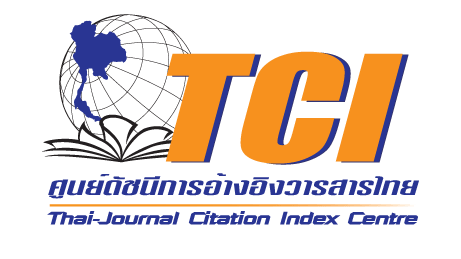A NEW PERSPECTIVE OF COMPOSING BASED ON INSPIRATION OF INDONESIAN TRADITIONAL MUSIC BEYOND THE GAMELAN
Keywords:
Gamelan, Indonesia, Folk Song, Traditional Dance Music, CompositionAbstract
An emerging issue in the world of Indonesian contemporary classical music is the overrepresentation of the gamelan, the famed set of musical instruments of Java and Bali. The widespread popularity of the gamelan has persevered, especially in Western art music circles, since the late nineteenth century, when its sounds first caught the interest of Claude Debussy at the 1889 Paris Exposition. Since then, the gamelan has inspired many Western and Eastern composers, particularly with respect to its unique timbres and sonorities. Although the gamelan has been justifiably recognized as a source of inspiration to many composers, it represents but one of the traditional musical styles of Indonesia–many of which have received far less attention. This article therefore has two primary aims: 1) to challenge and encourage composers to see Indonesian music in a broader perspective, to explore and find new sources of musical inspiration outside the borders of Java and Bali; and 2) to present discussions of two recent compositions which can be seen as examples in this regard: Ananda Sukarlan's Rapsodia Nusantara and Nathan Iskandar's Indonesian Suite.
References
Cakaplah. “Representasikan Budaya Rohul, Tari Persembahan Diganti dengan Tari Tepak Sirih.” https://www.cakaplah.com/berita/baca/32679/2019/01/15/representasikan-budaya-rohul-tari-persembahan-diganti-dengan-tari-tepak-sirih#sthash.AgnHkPo4.dpbs.
Diversity.id. “Tarian Penyambutan Tamu: Jamuan Istimewa dalam Gerak dan Musik.” https://id.diversity.id/tarian-penyambutan-tamu-jamuan-istimewa-dalam-gerak-dan-musik/.
EBSCOhost. “Gongs and Pop Songs: Sounding Minangkabau in Indonesia.” https://web-s-ebscohost-com.ejournal.mahidol.ac.th/ehost/detail?sid=1d8e1526-50e0-45b9-99e7-28387b07ff17@redis&vid=0&format=EB&lpid=lp_v&rid=0#AN=1033113&db=nlebk.
GPriority Media. “Tradisi Sambut Tamu di Nusantara.” https://gpriority.co.id/tradisi-sambut-tamu-di-nusantara/.
Harnish, David D. and Anne K. Rasmussen. Divine Inspirations : Music and Islam in Indonesia. New York: Oxford University Press, 2011.
Heryanto, Ariel. Popular Culture in Indonesia : Fluid Identities in Post-Authoritarian Politics. Abingdon: Routledge, 2008.
Islahuddin. “4 Internationally Recognized Traditional Indonesian Songs.” Brilio. https://en.brilio.net/wow/4-internationally-recognized-indonesian-traditional-songs-1609100.html.
Kelola. “Trisutji Kamal.” http://kelola.or.id/seniman/trisutji-kamal/.
Kristianto, Henoch R. “An Eastern Infusion: Indonesian and Western Elements in Ananda Sukarlan’s Rapsodia Nusantara 1-5.” Master's thesis, University of Sydney, 2012.
Muawanah, Siti. “Tari Padduppa Bosara Tari Tradisional Sulawesi Selatan.” YouTube video. May 31, 2014. https://www.youtube.com/watch?v=wGYZK14eq1E.
Nissen, James. “The Music of Indonesia.” Band on the Wall. https://www.guidetotheworldofmusic.com/articles/people-and-places/the-music-of-indonesia/.
Nusantara, Tari. “Tari Gambyong.” YouTube video. May 14, 2017. https://www.youtube.com/watch?v=aBD2aSde_RE.
Pesona Indonesia. “Tari Gambyong.” https://pesona-indonesia.info/tari-gambyong/.
Rohul, Dinas Pariwisata dan Kebudayaan. “Tari Tepak Sirih Kabupaten Rokan Hulu Provinsi Riau.” YouTube video. January 24, 2019. https://www.youtube.com/watch?v=UY7VhW_tjyM&t=135s.
Situmorang, Hendro D. “Rayakan Ultah, Jaya Suprana Rilis 18 Komposisi Musik.” Berita Satu. https://www.beritasatu.com/hiburan/163442/rayakan-ultah-jaya-suprana-rilis-18-komposisi-musik.
Suryadi. “Minangkabau Commercial Cassettes and the Cultural Impact of the Recording Industry in West Sumatra.” Asian Music 34, no. 2 (2003): 51-89. http://www.jstor.org/stable/4098457.
Sutton, R. Anderson. Calling Back the Spirit: Music, Dance, and Cultural Politics in Lowland South Sulawesi. New York: Oxford University Press, 2002.
The Jakarta Post. “'Keroncong': Freedom music from Portuguese descendants.” http://www.thejakartapost.com/news/2011/06/15/‘keroncong’-freedom-music-portuguese-descendants.html.
Tourism of Indonesia. “The Folk Dances.” https://web.archive.org/web/20101124083455/http://indonesia-tourism.com/general/theatre.html.
Weiss, Sarah. “Review Essay: Getting beyond Java: New Studies in Indonesian Music.” Ethnomusicology 51, no. 1 (2007): 131-42. http://www.jstor.org/stable/20174505.
Zulham, M. “Makna Simbol Tari Paduppa (Tari Selamat Datang) Kota Palopo.” Jurnal Onoma: Pendidikan, Bahasa dan Sastra 3, no. 2 (2017): 43-58.

Downloads
Published
How to Cite
Issue
Section
License

This work is licensed under a Creative Commons Attribution-NonCommercial-NoDerivatives 4.0 International License.
The copyright of the article belongs to the author. Published articles represent the views of the authors. The editorial team neither necessarily agree with nor take any responsibility for the article.





